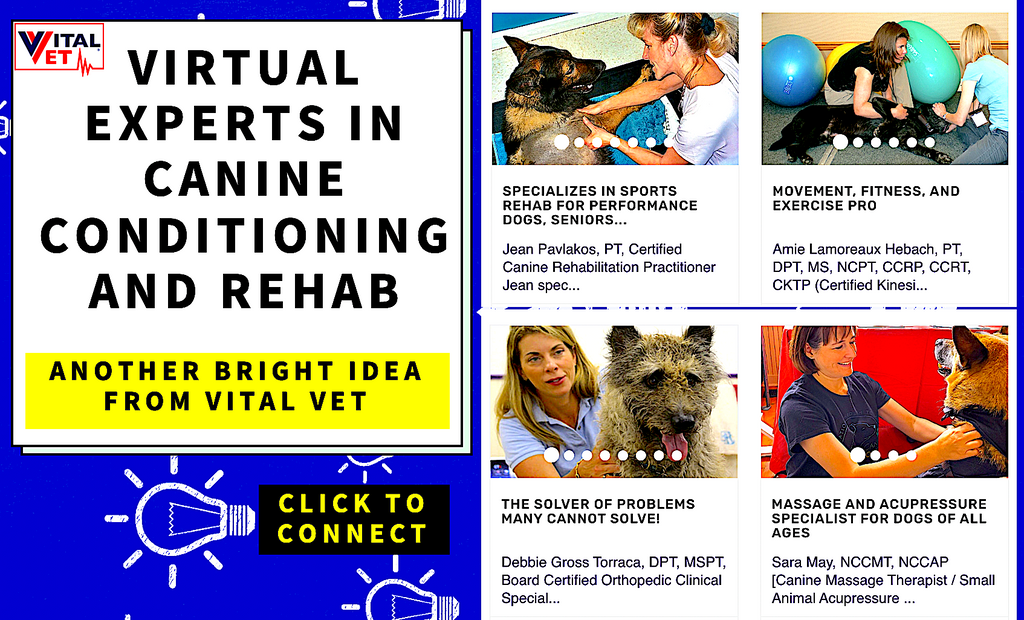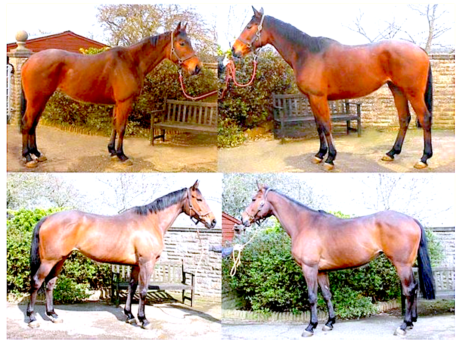
WHAT IS EQUINE REHABILITATION? (excerpt – full article, see link)
Equine Rehabilitation is a term often used to encompass retraining but it is actually the application of physical therapy treatments to help the body heal with the aim of improving or restoring correct and optimal physical function. It is about restoring muscular, tendon and ligament strength, joint and tissue mobility and function, balance and co-ordination. More often than not ,there are additional issues such as atrophy and abduction, spasms, hypertonicity, myofascial adhesion and proprioceptive dysfunction which also have to be addressed.
Anything that comes under the heading of “poor performance” indicates that equine rehabilitation, in one form or another is useful. Once the cause has been identified, the most appropriate treatment can be initiated.
Poor Performance in Horses
Just about every rider has been through the scenario of riding their horse and it just not feeling right. Commonly, it is put down to the horse having an off day.
If a horse demonstrates any of the following:
- stiffness on one rein
- crookedness
- head tossing
- tail swishing
- shortened or stilted strides
- difficulty in canter strike off
- disunited canter
- poor outline/hollowing/
- contact issues/teeth grinding
- saddle slipping to one side
- tripping
- uneven wearing of the shoes
Or more significantly:
- dipping of the back when groomed/saddled
- napping
- problems with the farrier
- not wanting to stand still to be mounted
- unexplained lameness
- bucking into canter
- reluctance to go downhill/uphill
- rearing/bucking
- refusing/reluctance to jump
- over-rotation of the pelvis on a circle
Or if you detect:
- uneven muscle tone
- carrying of the tail to one side
- muscle twitching/muscle spasms
then your horse may need help.
Of course any of the above can be symptomatic of other issues such as an ill-fitting saddle, inappropriate or poorly fitted bit/noseband, unbalanced feet, poor riding, an unbalanced rider, lack of fitness, lack of training, or gastric ulcers.
When horses show any kind of resistance, trainer and riders often resort to changing the bit and/or noseband or reaching for the side reins, draw reins or similar BEFORE ruling out possible causes. By forcing a horse into an outline by use of a training aid or lever/curb bit, further damage may be done as the horse adopts more compensatory ways of moving in order to cope.
Whatever the nature of the injury, whether something readily identifiable such as a sprain, strain, a pulled muscle, a foot abscess or ligament/ tendon damage or something that needs veterinary diagnostics to pin-point, a horse, as a flight (prey) animal, compensates in order to cope – otherwise in the wild he would become someone else’s dinner! If left untreated, this compensation will affect another part of the body and ultimately give rise to another issue.
Certain ailments also warrant rehabilitative therapy such as colic; indeed any horse that has undergone surgery will require at minimum, physiotherapy.
This horse’s pelvis is not sitting square as evidenced by Line C; there is consequential muscle wastage (Arrows A and B).
Look at the green line and you can see how the twist in the horse is causing the saddle to sit to the right.
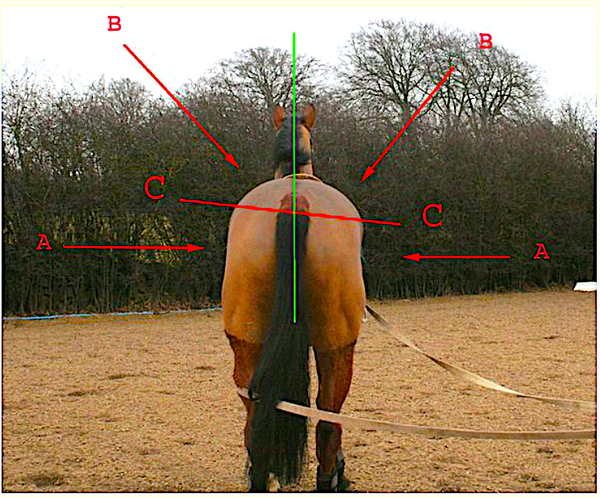
A horse with a pelvic tilt and/or rotation will have difficulty with correct canter strike off on a given rein depending on which side of the pelvis is affected.
It is not uncommon for an injury to be sustained due to an existing but unnoticed issue such as a pelvic tilt and/or rotation. A long-standing issue behind invariably leads to a foreleg injury.
Conditions, such as kissing spine, commonly manifest as a secondary or compensatory condition as a result of hind suspensory, hock, stifle, or sacroiliac problems.
This horse is not propelling from behind
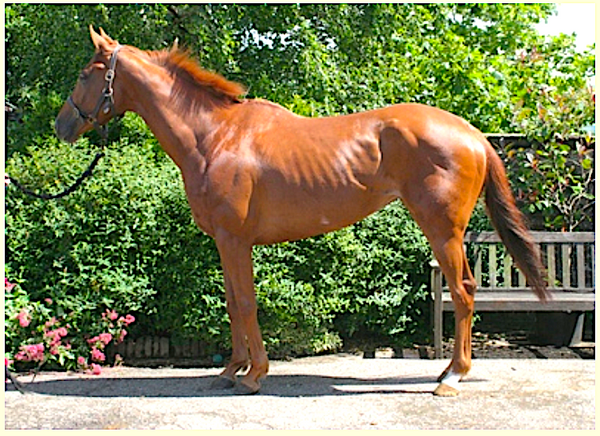
Evidence that a horse is not propelling from behind includes:
- lack of hind end development despite reasonable development in front; this horse has been pulling itself along. The fore-end musculature presents tightness and tension. This horse will have worked in a very hollow outline propping itself on the underside of neck muscles.
- horse is not taking any weight behind
- left foreleg being pulled back can indicate a forelimb injury; in this particular case there was tendon damage to the near fore.
Core Strength
Core strength is so important yet so many horses lack it. The muscles of the abdomen, back, pelvis, and thoracic sling need to be strong, toned and functioning properly so that the horse can comfortably carry the weight of a rider whilst at the same time carry himself and work correctly, The horse that has a weak core cannot be properly engaged and work in a consistent contact. So out comes a “training aid” – usually the most inappropriate one – and the horse is then forced to work in a restrictive, false outline which only serves to build the wrong muscles in the wrong places because the horse is not actually working the right muscles in the right way – which leads back to compensatory issues.
Weakness in the core manifests in a horse that is heavy in the hand, one-sided, resistant and often has difficulty maintaining an outline. By building and then maintaining core strength much can be done to help alleviate the symptoms of SCS (Spinal Crowding Syndrome – SCS), which if not addressed can degenerate into kissing spine.
By effectively putting a horse through a “yoga or pilates” programme to precisely target and strengthen his core and teach him to use his body correctly, inherent weaknesses can be overcome and a horse is able to develop self-carriage.
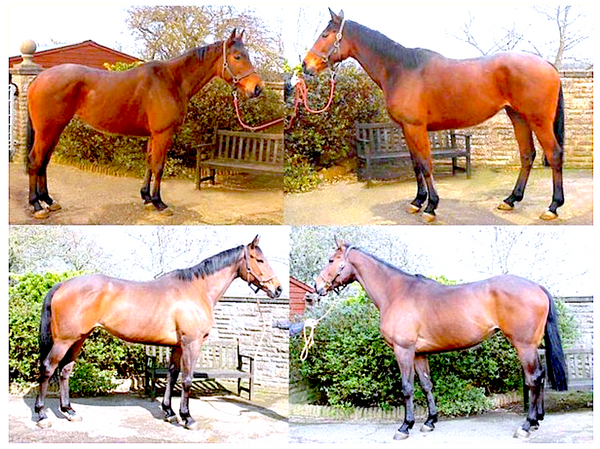
The top two images illustrate a very weak individual; the bottom two are the same horse just 6 weeks later, and this despite the horse being on stall rest due to significant tendon damage in both forelegs.
With proper balancing of the feet, lateral extensions to provide support, chiropractic and daily manual massage, lymphatic drainage, PEMT therapy combined with mobilization exercises to promote core strength, the horse has much improved posture which will continue to improve once long reining work can begin.
Tendon and Ligament Injuries
Injury to a tendon is common; as long as a horse gets appropriate rest and then a slow return to exercise commencing with in-hand walking, recovery is usually unremarkable. However we look at things from a slightly different angle; we do not just work at healing the injury but look at the horse as a whole – it’s total way of going:
- is the horse throwing weight onto one forelimb more than another
- is the horse trying to avoid using its back
- we look at muscle formation; are there signs of atrophy or over-development
- are any of the muscles hypertonic
- the wear on shoes; are any toes being dragged
- are the joints being flexed properly – not enough or actually over-flexion; a snappy hock is not always the sign of a horse that is “active behind”
By assessing the horse as a whole we look at why the tendon injury was incurred in the first place. Of course it may well be the result of an over-reach, a stumble or working on poor ground, but in many instances injury to a forelimb goes hand in glove with something else somewhere else but sadly this is often not recognized.
Injuries to ligaments often take longer to heal due to the non-elastic nature of ligament fibers and their lack of blood supply. Sadly when horses fail to recover from a ligament injury it is usually because they have been brought back into work too soon.
Kissing Spine
This is a condition which we have many dealings with from diagnosis, operation, through the rehabilitation process and a full return to work.

The xray in the left image shows a lovely healthy back with the vertebrae well-spaced out whilst the image on the right shows a horse that is in need of veterinary intervention. The right hand image shows whiter or brighter areas (follow the line of the arrows) – these are areas where the bones have been touching (kissing) and you can also see areas where there is actual bone loss due to inflammation – the darker areas adjacent to the whiter areas.
When deciding on the best course of treatment the number of dorsal processes involved and their site must be taken into consideration as of course must be the horse’s age and whether any other conditions such as sacroiliac, pelvic or hind suspensory issues present. Treatment can range from chiropractic, acupuncture, SWT, mesotherapy, corticosteriods or other medications as well as interspinous ligament desmopathy.
Some kissing spine treatments are deemed not to be successful and we believe the reasons for this to be:
- a rush to get a horse back under saddle as soon as possible
- ineffective or inaccurate groundwork resulting in poor muscle strength. People get very focused on building the longissimus dorsi when actually it is the muscles which lift and flex the back which are the most important ones.
- other undiagnosed issues – we always recommend all areas of a horse are investigated if kissing spine is diagnosed; we see too many horses operated on only for an owner to then discover another issue is also presenting
- there are complications due to infection (in the case of resection). Whilst formerly of the opinion that operations carried out with the horse standing were actually better, we now believe that it is best if horses are on their side. If you wish to know why please contact us.
A tell-tale sign that back muscle may not suitably built up is when palpating the spine you can feel where resection has taken place; in some cases you can visibly see the “crenellation effect” [as we call it]. The quality of the ground work during active rehabilitation phase is so important. Quite why everyone is in such a rush remains a mystery but the longer spent on the groundwork the stronger the back muscles will become to allow the horse to return to full athletic ability.
Nutrition
Attention to diet is important all the time but especially so for the horse recovering from an injury or illness. A proper balance is needed between supplying the vital nutrients that aid repair and keeping or building condition but without running the risk of compromising the situation by overloading the system.
Our choice of feeds of those provided by Castle Horse Feeds as we firmly believe that the quality and calibre of the whole range is second to none and in using them we are confident that we are providing the very best for the horses in our care.
Equine Therapies
Pulsed Electromagnetic Therapy (PEMT) uses a range of different frequencies to help stimulate different cells in the body, helping them to work more efficiently.

So, whilst such therapy can be used to promote general health and well-being, it can also be used for rehabilitation and as a healing assistant, helping to aid the repair of soft tissue injuries, reducing inflammation, for pain relief and even the healing of fractures
The rug pictured is the ACTIVO-MED Combi Pro from FMBs Therapy Systems and provides both PEMT and Massage therapy. To this we can add legs wraps and/hoof boots, or these can be run as stand alone therapy applications.
Massage therapy is so often just associated with the promotion of relaxation/release of tension and the maintenance of general health but it’s more important benefits include:
- tone and warm up muscles pre-exercise
- post-exercise cool down to help prevent tightening and muscle stiffness
- improve/promote circulation, thus oxygenating the muscles
- elimination of waste products
- promote lymphatic drainage
- promote venous drainage
which leads to improved joint mobility, improved respiratory function, softness and suppleness of muscles as well as improved general condition (skin, coat, hooves).
Massage is provided either via a rug or manually. When applied via a rug non-percussive vibrations are delivered by strategically placed modules which work on key muscle groups at a pre-set pressure and sequence. Massage can be Cycloidal Vibration Therapy (CVT) which is multi-directional or Cyclonic which is two-way. However a machine cannot tell you whether a muscle is still tight or detect changes (whether positive or negative) that may be occurring so hand massage allows us to literally feel what is happening as a horse soon gives his responses to varying pressures!
Magnetic therapy has been used “since time began” as a method of pain relief. It is a completely non-invasive therapy to promotes the body’s natural healing processes. It is not the magnets that actually do the healing but they create an environment in the body that helps to speed up the natural processes of removing inflammation and restoring circulation. It is believed this is achieved when the blood stream and nerves are stimulated as the blood passes through the magnetic field.
Laser [Light Amplification by Stimulated Emission of Radiation] therapy can stimulate and so help improve the healing of open wounds and ulcers even when there is skin deficit. . Soft tissue injuries such as to tendons, ligaments, muscles and periosteum also respond well.
Kinesiology taping is different from any other type of bandaging in that the special tape used does not compress or limit movement. Whilst traditional bandaging support compresses tissue kinesio tape actually lifts [decompresses] the skin allowing/facilitating increased blood flow and lymphatic drainage both of which are important factors in the healing process. And because there is no compression the is much reduced pressure on the nerves which helps to manage and reduce pain. The special tape used allows complete mobility so can be used on a moving horse. Use of kinesio tape is said to decreases the formation of adhesions.
Author: Fred and Rowena Cook
Link: https://www.equinetraining.co.uk/main-menu/equine-therapy-and-equine-rehabilitation
Need rehab help for your dog or cat? Meet with our Virtual Consultant Experts Here.


